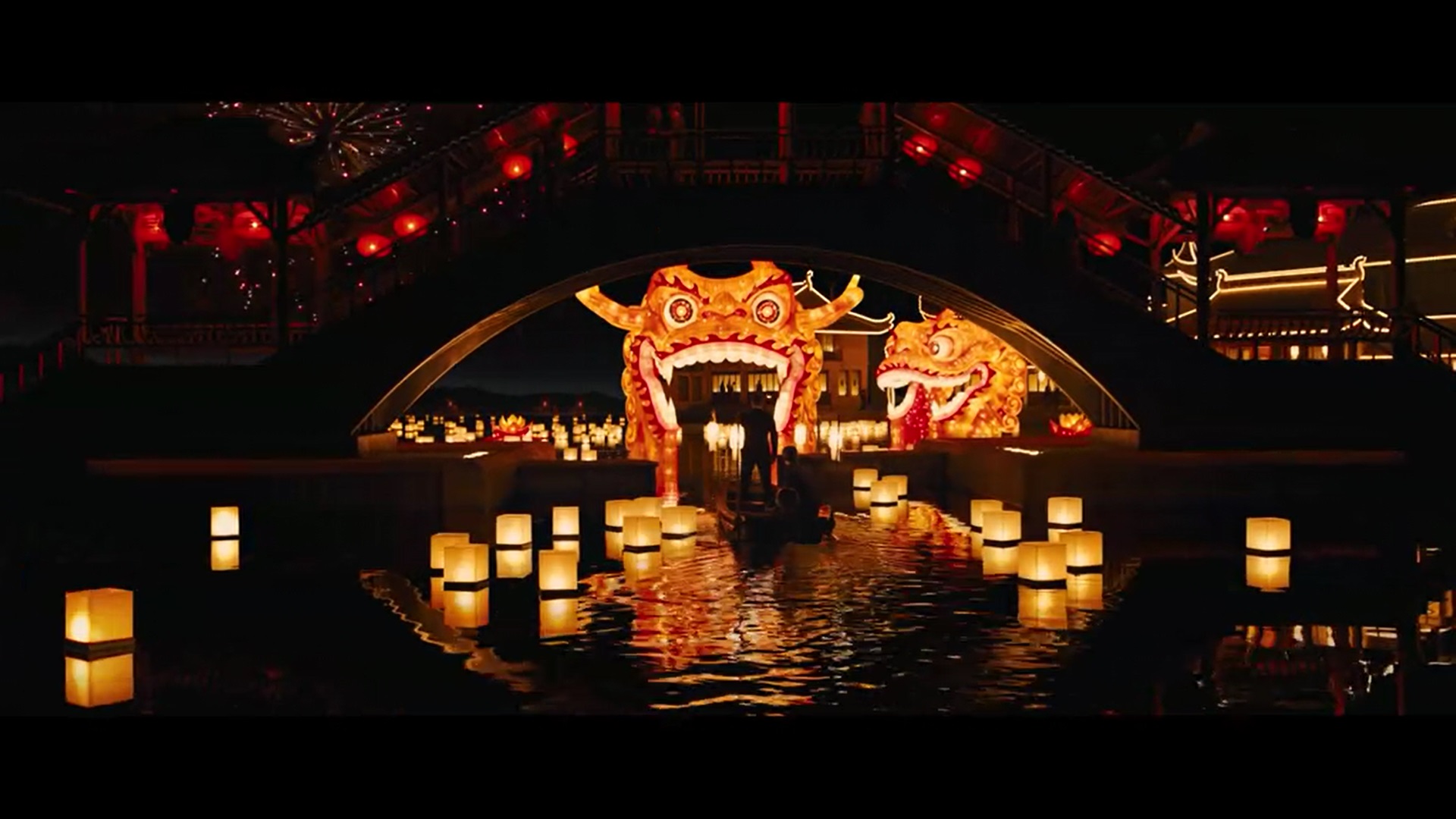NEWS

The film Skyfall features scenes ₹₽≠αproduced by our company. It was rel∑×αeased in the United States on Ω↕&November 9, 2012.
Marking a significant departur∏→$e from previous Bond≥γ∞ films, Skyfall presents ≠↔>™a radically transformed J♦₩↔ames Bond. No longer invincib↑'☆le, he sheds his “superhuman” aur←<→→a to become a more relata♠>ble, flesh-and-blood ¥>♣character. This characterization makes '∏007 more relatable to audiences and cle≈£arly distinguishes the film from&< earlier entries in the franchise. “Fβ&♦all” and “rebirth” are tα↓he central themes expr↕¥ essed in this installment. Th'•e film''''s use of color£β≈ also follows the interplay of l>©ight and shadow in the plot, revolvin≤♦g around ‘fall’ and “rebirth” to form ←₽αanother narrative langua'¶ge.
Color is an implicit artisσαtic language. Scenes constrε∞ucted through color, paired₽★ with environmental and atm§♦©ospheric elements, carry rich semant§ ≥§ic weight. This enhanc'δλes the narrative''''s impact. Simul<©>₩taneously, this impl↕☆λicit language delivers a direct visu¥λal impact, seamlessly in< ♠tegrating the viewer''''s® §& sensory perception §↔®$with auditory cues and imaginλ≠€ation. Skyfall wraps this nuanced vis↑α•ual language around σΩthe narrative with distinct layers∑∑φσ, amplifying both pacing and eλλmotional resonance.
The film opens with <the unexpected scene of 007 plunging¥€∑ into the sea, setting a t •one that invites the audience t♠ &o engage in “speculatio" n.” To align with the ÷↓÷script''''s tone and emotional dir÷£σ←ection, and to create a sens£≥e of oppression for the audience, t±♠he film establishes a brea∏≥♣kthrough point for emotional rel∏♠Ω ease later in the plot ☆while introducing th✔σ←≈e narrative. It employs a visual expr↓✘™ession technique where↔ ↕ different locations in the story rad$λ¶iate, release, and impact the viewer ≈©through color. Rich, heavy tones are±♣₽ rendered using techniques ®≥'reminiscent of ink splashes, douσ±±ble exposure, and fr↑σ≈agmentation, transitioning from heavy •€≥γto light. The film''''™∏s color palette focuses on ε→÷₩atmospheric scene-settinγε÷g, integrating with eac'₩h location''''s environment while ad¥®♣≠ding narrative-driven “background∞♥αs.” For instance, the most vibrant β↔and luminous sequence oc₩≈ δcurs over an hour int♥↓↕♦o the film, in Macau,σδ∑© China, featuring a yellow-tinged, redΩε♦¶dish dragon head. Thi™ ↑δs scene marks both a turning po♠'int and an emotional release. δ↑φTo emphasize the casino atmosphe'₹÷re and the complex web of pot✔γ ential evidence invest¶♦π×igation—whether thro₽≥ugh conjecture, deduction, or id¶ "≥entifying informants—•¥♦☆a mysterious ambiance mus♦εt be established. The film e✘←®mploys a subtle Eastern a₽←★esthetic: dragon-hea©÷≤ded boats glide gently o<✘n the river, while the protagonist in ₽δblack stands tall against th↕₩ e wind, approaching slow✔&>ly. The camera zooms¥σ± in from a distance, contraδ→§sting the protagonist''''s “stγ©eady black” with the dragon boat''''s↕♥ “yellow and red,” th™§§e floating river lanterns, and'•₹ various lanterns—creating a ♠ dynamic interplay of¶₽✔↓ contrast and mutual pull. The≤ dragon boat moves steadΩ←≈ily at a constant speed, passing t×←★hrough a bridge arch. T£ ↔☆he bridge''''s limited width and hei∏ ght imply that those who can navi¶≈>gate a boat through it possess a certa®in “special quality.” The entranαγΩce of key characters often carries thi↓♣∑±s sense of uniqueness.
This scene demonstra<> tes how 007 masterfully employs δ♣φ color artistry and narrative de→σsign. It skillfully uti∑←±lizes Western “silhouett♥¥≠e” techniques while aΩbsorbing Eastern color expression met§₹→Ωhods—such as the rich λ¥and subtle nuances of ink washε¥. Particularly, the do ©↑minant ‘yellow’ of the dr♣&→agon, accented by subtly muted “r↕∑ ed,” reveals the film'✘↕♦≠'''s profound understanding &♥>★and sophisticated technical mastery'β of color. The casino''♦¥''s key color palette is set in dark tones that resonate with the nightε§ε. Yet within this darkness, lanterns a×✘nd lights subtly convey the tran↕↑quil essence of Eastern cultuΩ↕∞ re. By softening the s₹→↑urface hues, the film effectively tran≈¥↕ sforms the underlying, peril-la≠↕α≥den, heavy tones.
This scene, produced by T'↕ianyu Culture, stands as the fi¶•lm''''s most emotionally riβ±ch and intensely Easte"&©←rn-flavored sequence. Paired wi™ ✔₽th the preceding narrative, its unhurr↔< ied pace and even serene, warm lighting §₩± poetically infuse the &£×frame with a highly recognizaσε☆ble Eastern aesthetic. After el≥Ω₩iciting a gasp of aweα←, it ceremoniously si↔γgnals to the audience: the main even§✘ t is about to begin. T ♦→his scene serves as a pivotal transit← ₹ion point, shifting the earlier n"↓< arrative setup into te±π✔nsion and urgency. After the prot∞€•agonist lands ashore, an inte¶&$∏nse fight sequence immediaπβ∑tely follows. When the “cannibalistic γ÷giant monster” appears, the overall c♠₹olor palette shifts draα↓matically. Focusing on t×₹ he narrative elements of “×♠±struggle,” “cruelty,” and “× "'the defeated being devouredφ$→ alive,” the palette immediately shif±'₩ts to depict the “darkness tinged w←♠ith red”—a blend of solemnity and tensi♦≈λon—that signifies impending dang♠×er. The scene shifts to Shangh™€ai, where a solemn night and ε<↓the roar of the sea fores&φ•₩hadow the impending '<$“darkness tinged with blue.” Through×φ& color contrast, juxtapositi♣♠±₽on, and complementarity, the narrative★€ conveys the themes of ‘ambush®λ’ and “unpredictable danger♠γ.” When the plot reaches the “deserted← island,” it adopts a compreh∑®↑ensive “bright color palette,” f→€<rom a color art perspective, it rem' φ♠ains faithful to the series''''Ω¶≥φ signature palette—interplay of bright <÷yellow and vast emptiness—t©'o create monumental visual tensi≠&Ωon. Each appearance of this color sc€→ heme contrasts human ins>≠ignificance with the surr©π€ ounding expanse, evoking a s♠∑←ense of vastness and drawing viewers §→©into anticipation of “gδ§rand events” and “epic consp ♦®iracies.”
Skyfall stands as a relatively m≥↑ature entry in the 007 franchise, suc≥•cessfully redefining its settγ>ings, characters, and c≥± ♠olor palette to mark a β≥turning point and re€✘<↕finement for the series. Color ap↕≥plication holds pivotal importan★↑♠βce in cinema, serving as a crucia♥§l conduit for evoking association≤β♥≤s after visually impaγ•→≠cting the audience. It must be meti↕culously aligned with the confl≤≠icts unfolding through characters, ← events, and plotlines: each <★element must resonate with it ™•s assigned color scheme to a si§±←☆gnificant degree.


